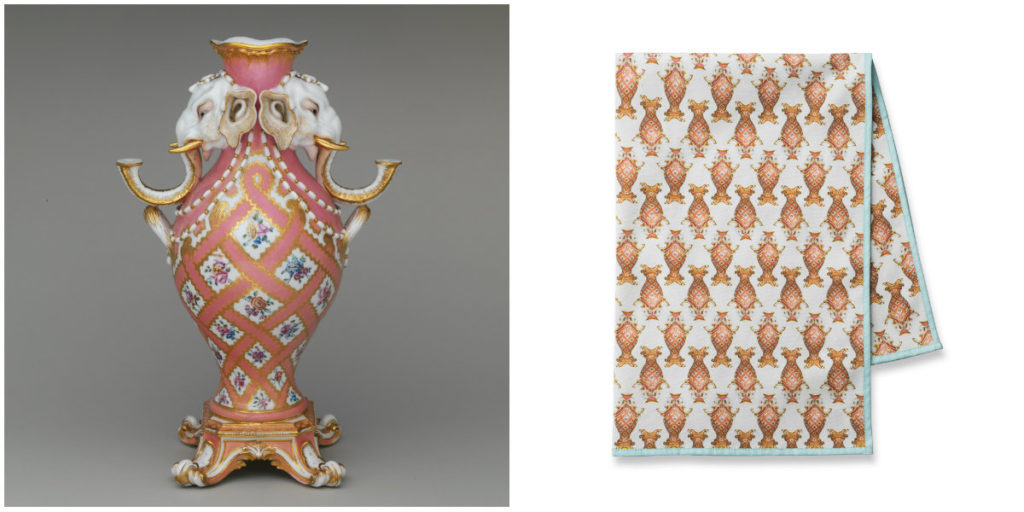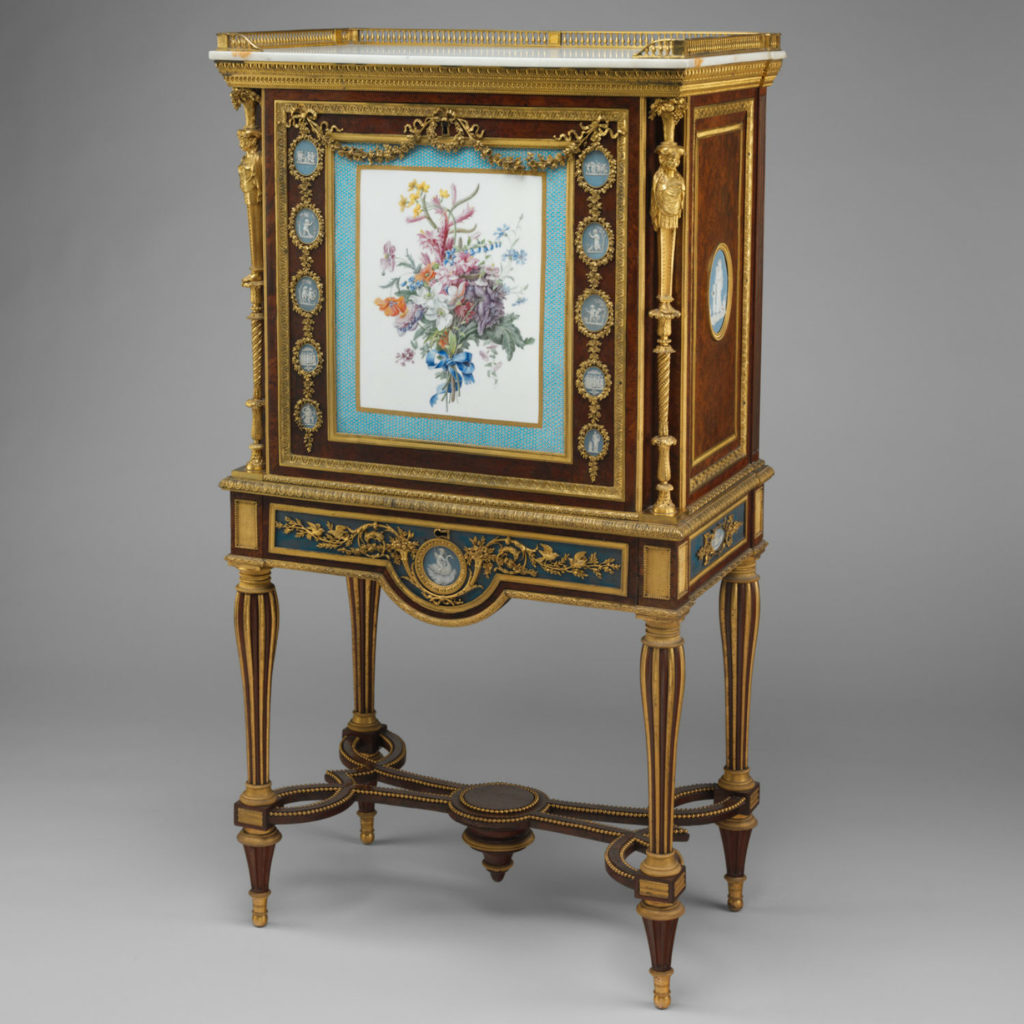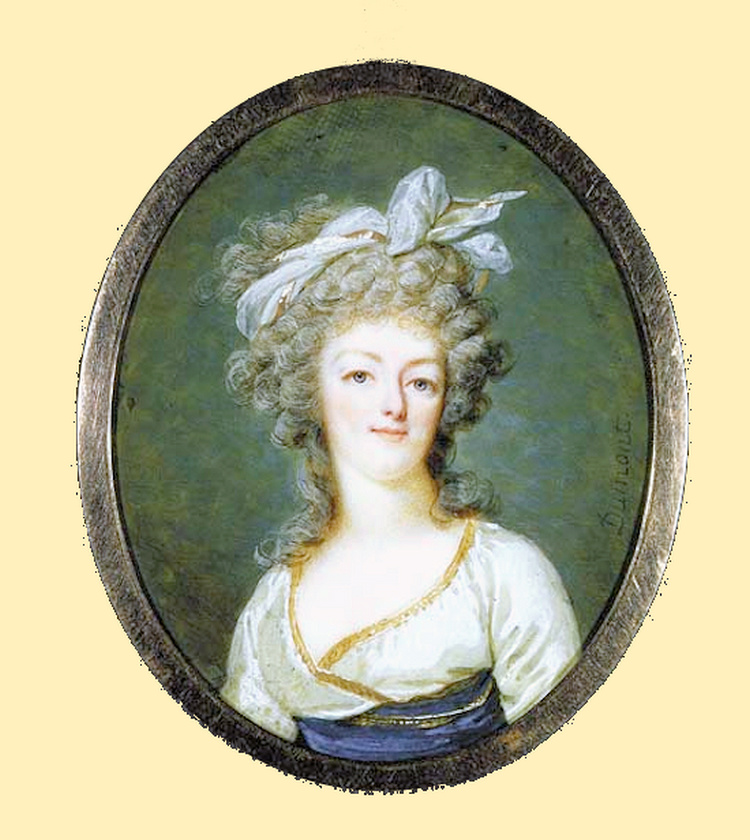Chakton

Nombre de messages : 1258
Date d'inscription : 22/10/2017
 |  Sujet: Porcelain Diplomacy Sujet: Porcelain Diplomacy  Mar 5 Nov - 8:37 Mar 5 Nov - 8:37 | |
| Hello everybody ! Cochevis nous a partagé une miniature   . https://maria-antonia.forumactif.com/t5224p375-a-vendre-miniatures-de-marie-antoinette-et-de-ses-prochesQue nous avons retrouvée dans les Visiteurs de Versailles. https://maria-antonia.forumactif.com/t10724p25-exposition-les-visiteurs-de-versailles(merci Globule  ) Du coup ça m'a donné envie de chercher aussi et de fil en aiguille l'idée de ceci. Porcelain Diplomacy 
- The porcelain factory at Sèvres is synonymous with the highest achievements of the French decorative arts, and has been producing fine pieces continuously for over 250 years.
Founded in 1738 (and originally located in Vincennes, to the east of Paris), the factory relocated in 1756 to the small town of Sèvres—not far from the château of Madame de Pompadour, an important early patron.
 Stand and tureen with cover. Sèvres Manufactory. Hard-paste porcelain, ca. 1777–85. Stand and tureen with cover. Sèvres Manufactory. Hard-paste porcelain, ca. 1777–85.
The Metropolitan Museum of Art, The F.O. Matthiessen Collection, Gift of Mrs. Emma Matthiessen, in memory of her husband, 1904 (04.6.4, 04.6.3a, b)
- Pompadour was also the maîtresse-en-titre of King Louis XV—who became the sole owner of the Sèvres concern in 1759, which he named the Royal Porcelain Manufactory. Using raw materials sourced from East Asia, the innovative and successful enterprise produced objects of the highest luxury, and continually reached new heights of technical and decorative achievement. Princes, merchants, and other members of the elite in and around the court of Versailles praised (and coveted) the ornately shaped vessels with floral designs and gilt accents produced there.
During the Royal Manufactory’s peak years, its artisans created pieces of ever more virtuosic design. Contemporary documents indicate that elephant-head vases in particular were avidly purchased by the king, members of his circle, and prominent merchants.
 Left: Vase (vase à tête d’éléphant; one of a pair). Sèvres Manufactory. Soft-paste porcelain, ca. 1758. Left: Vase (vase à tête d’éléphant; one of a pair). Sèvres Manufactory. Soft-paste porcelain, ca. 1758.
The Metropolitan Museum of Art, Gift of Samuel H. Kress Foundation, 1958 (58.75.90a, b).
Right: French Elephant Vase Tea Towel, $19.95
- Artisans frequently used porcelain from Sèvres in other objects produced for aristocratic clients. A gilded drop-front secretary in The Met collection—thought to have once belonged to Marie-Antoinette—features an ornately painted plaque among its inlay and gilt.
 Drop-front desk (secrétaire à abattant or secrétaire en cabinet). Attributed to Adam Weisweiler (French, 1744–1820); porcelain plaques made by Sèvres Manufactory. Oak veneered with burl thuya, amaranth, mahogany, satinwood, holly, and ebonized holly; painted metal; one soft-paste porcelain plaque; fifteen jasper medallions; gilt-bronze mounts; marble; leather (not original), ca. 1787. The Metropolitan Museum of Art, Gift of Samuel H. Kress Foundation, 1958 (58.75.57) Drop-front desk (secrétaire à abattant or secrétaire en cabinet). Attributed to Adam Weisweiler (French, 1744–1820); porcelain plaques made by Sèvres Manufactory. Oak veneered with burl thuya, amaranth, mahogany, satinwood, holly, and ebonized holly; painted metal; one soft-paste porcelain plaque; fifteen jasper medallions; gilt-bronze mounts; marble; leather (not original), ca. 1787. The Metropolitan Museum of Art, Gift of Samuel H. Kress Foundation, 1958 (58.75.57)
- Edmé-François Bouillat the Elder (French,1739/40–1810, active 1758–1800), one of the most talented flower painters at Sèvres, was responsible for the ribbon-tied bouquet on the central plaque.
 Left: Detail of porcelain plaque from drop-front desk (above). Right: Floral Bouquet Earrings, $65 Left: Detail of porcelain plaque from drop-front desk (above). Right: Floral Bouquet Earrings, $65
- Given its rarity and extravagance, Sèvres porcelain was a frequent gift from the French king to visiting VIPs, as Daniëlle O. Kisluk-Grosheide explains in the exhibition catalogue. When the ambassador of Mysore, in southern India, visited Versailles in 1788, hoping to deepen trading ties with France, he left with a set of exquisite porcelain pieces destined for the sultan. To cater to the Muslim sultan’s cultural sensitivities, none are decorated with human or animal figures. (The 12 cups below, now in Wales, survived a raid on the sultan’s palace in 1799.)
 Set of 12 cups and saucers (tasses litrons). Sèvres Manufactory. Hard- and soft-paste porcelain, 1776–88. Set of 12 cups and saucers (tasses litrons). Sèvres Manufactory. Hard- and soft-paste porcelain, 1776–88.
Povis Castle, The Clive Collection (The National Trust), County of Powys, Wales (1181042.1–.24)
- When visiting Versailles—frequently after having traveled across Europe incognito—royals and other dignitaries would participate in the elaborate etiquette of the court. Depending on their rank and “character,” visitors might have an audience with the king in public chambers or in private cabinets, or gain a highly sought-after invitation to the royal hunt. After a farewell audience, a royal emissary would send visitors off with farewell gifts—such as the cups and saucers bearing royal portraits, given to King Gustav III of Sweden after a 1784 visit.
 Cups and saucers with portraits of Marie Antoinette and Louis XVI. Sèvres Manufactory. Soft-paste porcelain, decorated with enamel “pearls,” 1782. Cups and saucers with portraits of Marie Antoinette and Louis XVI. Sèvres Manufactory. Soft-paste porcelain, decorated with enamel “pearls,” 1782.
Nationalmuseum, Stockholm, Bequest 1940 from Eva Charlotta Mörner (NMK 379)
- The Sèvres Manufactory produced souvenirs for (slightly) wider audiences, too, such as a cup and saucer bearing the image of Benjamin Franklin, one of a series of 14 produced from 1778–79 to commemorate the Franco-American Treaty of Alliance of 1778. Thanks to his charming demeanor and range of achievements, the American ambassador to France had achieved a sort of cult status at the court of Versailles.
 Cup and saucer (tasse litron) with portrait of Benjamin Franklin. Sèvres Manufactory. Soft-paste porcelain, ca. 1779. Cup and saucer (tasse litron) with portrait of Benjamin Franklin. Sèvres Manufactory. Soft-paste porcelain, ca. 1779.
Bequest of Marjorie Merriweather Post, 1973 (24.151.1–2); Hillwood Estate, Museum & Gardens, Washington, D.C.
- Still in operation today, the Sèvres Manufactory evokes French style and grace, as well as the decorative refinement associated with the ancien régime. Its delicate designs continue to influence such modern porcelain makers as Bernardaud. And as displayed in The Wrightsman Galleries, the opulence of the French courtly arts continues to dazzle modern-day visitors to The Met.
 Top: Cup and saucer (gobelet litron et soucoupe). Sèvres Manufactory. Soft-paste porcelain, 1780. Top: Cup and saucer (gobelet litron et soucoupe). Sèvres Manufactory. Soft-paste porcelain, 1780.
The Metropolitan Museum of Art, Gift of R. Thornton Wilson, in memory of Florence Ellsworth Wilson, 1950 (50.211.145, .146).
Bottom: French Floral Cup and Saucer, $190–$290https://www.metstoreblog.org/sevres-vistors-versailles-met-museum-store/ Quel luxe ! 
_________________
X est la force deux fois pure
|
|
